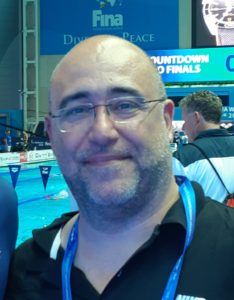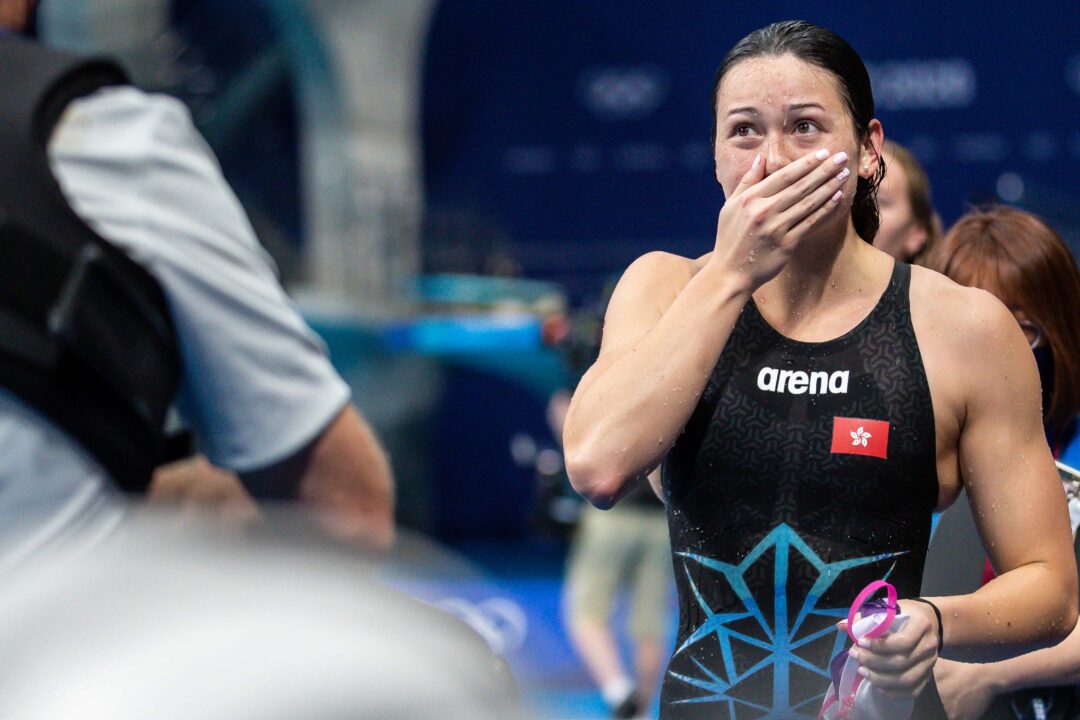Siobhan Haughey: the nitpicker
At the Short Course World Championship in Abu Dhabi, we had the privilege to see three individual World Records:
- Siobhan Haughey in women’s 200m freestyle,
- Maggie MacNeil in women’s 50m backstroke
- Florian Wellbrock in men’s 1500m freestyle.
Three amazing performances.
Siobhan Haughey caught my attention: her race was breathtaking.
It was a mix of strategy and tenacity. The previous record was set by Sarah Sjostrom in August 2017.
Haughey’s 25 meter splits:
We can see from the video and from the data, at the third-25m she accelerated. She outstripped the other athletes, who did not react. Siobhan Haughey took the lead of the race. After this point she was incredibly constant, not only as regards the time but also considering the main kinematic parameters:
stroke rate and distance per stroke.
The swimming phases have been uniform and constant for all 200m, she’s been almost perfect.
It is possible to detect a small slow-down in the swimming speed in the last 25m. The time is almost the same but in the last strokes the body does not rotate as previously.
An accurate observation of the turn time shows another interesting issue.
THE TURNS
The turn time from 5m before the wall to 10m after the wall is going to slow down.
Data are undoubtedly interesting. It gets more remarkable if compared with the consistency of the swimming phases.
This is something Siobhan may take advantage of in the future.
Here a splits table with the main parameters of her race:
The last issue which caught my attention is just a feeling I got!
THE SWIMMING PHASES
In the swimming phase of every 25m I noted some small differences.
Therefore, I decided to measure the stroke rate and the distance per stroke both from 10 to 15m and 15 to 20m.
Honestly it is the first time that I have measured these parameters in this way, so I have no data to compare.
It is interesting to see how, in the first part – 10 to 15m – Siobhan Haughey is keeping a bit higher stroke rate and a DPS noticeably shorter than the one recorded from 15 to 20m.
Those data have the same trend from the beginning to the end of the race.
It looks like the athlete is not able to reach the best DPS at the beginning of every length, after the underwater phase. Just in the first and in the sixth 25m the first part, 10-15m, is faster than the second one, 15-20m.
This is a very interesting point and for sure I will study it further. It could be interesting to see the same trend in long course, where it could be more effective.
HAUGHEY’S PRACTICE DATA
I have a special connection with Siobhan.
I’d like to show you some practices to let you see how meticulous she and her staff are.
In the first one it is possible to see how hard they worked to build and memorize the race pace in a different condition.
The second practice it’s about speed endurance. It shows us how they worked to keep the highest possible speed throughout.
In the first practice we can see four set of race pace, in four different ways.
- 1st set: 8×50 @ 1’15” progressive 1-8, holding the stroke count.
- 2nd set: 16×25 @35”, increasing the underwater kick number each odd 25m (3-4-5-6-7-8-9-10).
- 3rd set: 8×50 @1’15” from the middle of the pool (10m in -25m- 15m out) in order to include two turns in every 50m.
- 4th set: 8×50 1 each 1’10”- 1’05” – 1’00” – 55” – 50” – 45” – 40”, in order to memorize the race pace in increasingly difficult metabolically condition.
It is very interesting to see that Siobhan Haughey was using the tempo trainer set to 46 stroke per minute or 1”30 sec per stroke. It is perfectly the same average stroke rate measured in the race.
If we check the time realized in the last set, we can see if we add the turn time, we reach perfectly the pace hold in the race. We can find the rotation time in the race analysis report, the Siobhan’s pushing time, impossible to measure in the race, is taken from our underwater video test is around 0.30sec.
Siobhan Haughey is coached by Rick Bishop, from Michigan University and Tom Rushton from Energy Standard, from the Olympic games to the World Championship.
The showed practices are by courtesy of Coach Tom Rushton
VIDEO ANALYSIS
This story comes courtesy of STEFANO NURRA
- Analyst of Turkish Swimming Federation
- Analyst of Energy Standard







So race pace training. 4 different ways. Hold stroke count while increasing effort. Increase kicks. Mid-pool. Descending intervals. Love the set.
Interesting Thomas Heilman set on p and p was same principal but holding stroke count at 100 pace.
Everyone moving to these race pace training styles probably means we won’t see a 400 wr in men’s swimming until the year 2200 but at least the 100 and 200 records will get demolished.
Her coach is Rick Bishop. The other was a stopwatcher timing her practices written by Bishop.
#RickBishop=Legend
From the list the starts this article I surmise it is a good choice these days for women to go to the University of Michigan to swim.
Rick Bishop, Louisiana State University*
Big mac’s swim was better
Nah